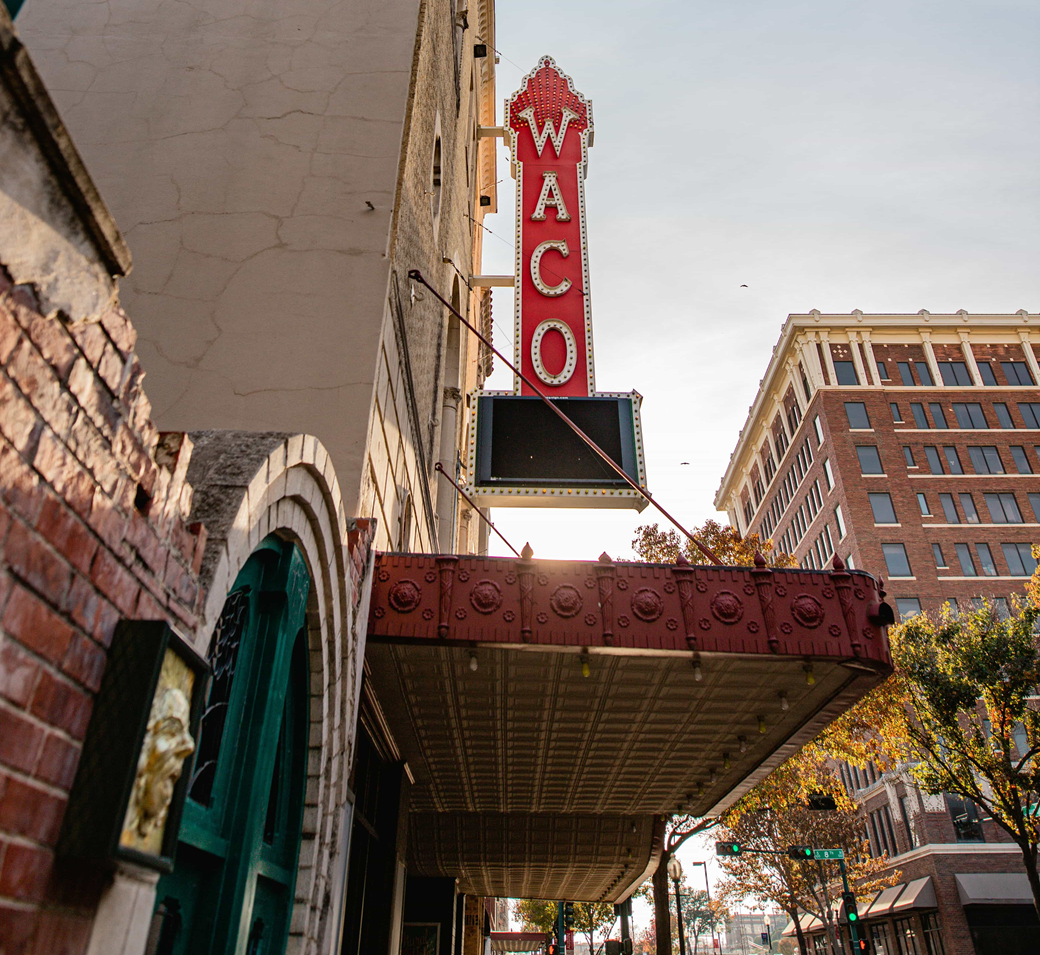Waco, Texas: A Tale of Resilience, Transformation, and a Bright Future
Nestled along the picturesque banks of the Brazos River, Waco, Texas, is a community with a history as diverse as the vast Texan terrain it calls home. From the devastating tornado of 1953 to the enigmatic story of the Branch Davidians, the Twin Peaks biker shootout, the revitalization of Magnolia, the growth of Baylor University, and ongoing economic development, Waco‘s journey from 1950 to the present is a testament to the resilience of its people and the city’s unwavering spirit. In this article, we will embark on a journey through time to explore the captivating story of Waco, Texas.
The Waco Tornado of 1953: A City Rebuilt
The day was May 11, 1953, a day forever etched in the collective memory of Waco, Texas. A colossal tornado, one of the deadliest in the state’s history, bore down on the city, leaving a trail of devastation and sorrow in its wake. With a staggering death toll of 114 and massive destruction, this tornado altered the city’s landscape in an instant. Entire neighborhoods were reduced to rubble, and the survivors were left to grapple with the magnitude of the disaster.
In the midst of this calamity, Waco‘s spirit of resilience was forged. Neighbors came to the aid of neighbors, and strangers extended a helping hand. The city’s reconstruction efforts began immediately, an ambitious endeavor to rebuild from the ground up. This tragedy, while heartbreaking, acted as a catalyst for progress, driving the modernization of Waco’s infrastructure and emergency response systems, ensuring the city would be better prepared for future challenges.
Media Misrepresentation of Waco Texas: The Branch Davidians
Fast forward to 1993, and Waco‘s place in the public consciousness took a drastic turn. The events surrounding the Branch Davidians at the Mount Carmel Center reached a devastating climax, leaving an indelible mark on Waco‘s identity. The charismatic leader of the religious sect, David Koresh, and his followers engaged in a prolonged standoff with federal law enforcement officers in Elk, Texas, culminating in a catastrophic inferno and the loss of many lives.
The media’s portrayal of these events, at times sensational and biased, cast a long shadow over Waco. Because the city had the closest airport to the cult’s compound, it became inextricably linked to the tragic events, despite the fact that they occurred outside of Waco. For years, national media painted a bleak picture of Waco, portraying it as a city plagued by violence and fanaticism.
However, the residents of Waco knew there was more to their city than met the eye. While the Branch Davidian episode was a part of their history, it did not define the complete story. They understood that the events of 1993 could not encapsulate the essence and character of their city.
The Twin Peaks Motorcycle Shootout: A Tragic Anomaly
In 2015, Waco once again found itself in the national spotlight, this time due to the Twin Peaks motorcycle shootout. A violent clash between rival motorcycle gangs erupted at the Twin Peaks restaurant, resulting in multiple fatalities and injuries. The incident garnered extensive national media attention and reinforced the perception of violence and lawlessness.
Waco’s residents were well aware that this tragedy did not define their community. They recognized that the event was tragic and isolated, and the actions of a few did not reflect the entire community. In the aftermath of the shootout, the city united to heal, fostering discussions about safety, law enforcement, and community involvement.
Magnolia and Economic Development: A Revitalized Waco
Despite the challenges and setbacks, Waco experienced an economic resurgence, driven by the creation of Magnolia Market. Chip and Joanna Gaines, stars of the hit TV show “Fixer Upper,” embarked on a mission to transform a run-down neighborhood into a thriving retail and dining destination. The success of Magnolia came to symbolize Waco’s commitment to revitalization and economic progress.
Magnolia Market drew visitors from across the country, leading to increased tourism and economic opportunities. Local entrepreneurs capitalized on the renewed interest in the neighborhood by opening restaurants, shops, and other establishments. This revitalization breathed new life into an area of the city that had previously been overlooked.
Baylor University’s Expansion: A Cultural and Intellectual Hub
Baylor University, established in 1845, had long been a part of Waco’s identity. The university evolved alongside the city, expanding its academic offerings, athletic programs, and cultural impact, solidifying its position as a leading institution of higher learning.
The growth of Baylor had a profound impact on Waco‘s economic and cultural landscape. The presence of the university brought an influx of students, faculty, and resources, enhancing the city’s intellectual and cultural offerings. Baylor’s influence extended beyond the campus, helping to shape the city’s character and fostering intellectual and cultural vitality.
A New Waco Texas Narrative: Resilience, Reinvention, and Promise
In recent years, Waco has worked diligently to shed the limiting narratives imposed upon it. The city recognized that it was more than a tragic event or a single incident. Wacoans understood that their city was defined by its people, their determination, and their drive to create a brighter future.
From 1950 to the present, Waco’s narrative has been one of perseverance and reinvention. The city faced challenges but also seized opportunities for growth and transformation. Waco introduced a new narrative that highlighted its flourishing cultural institutions, economic prosperity, and educational facilities. This narrative showcased the genuine spirit of its people, who refused to be defined by the past and were determined to succeed.
Waco continues to move forward with a sense of purpose and pride, carrying with it the lessons of the past and the dreams of a better future. The city stands as a tribute to the resilience and tenacity of its residents, a place where the true spirit of Waco is on display for all to see. In a world where narratives can be misleading, Waco’s story is one of hope, renewal, and a promising future.
Waco’s Promising Future: A Beacon of Resilience and Renewal
As we reflect on Waco’s journey from the devastating tornado of 1953 to its modern-day renaissance, it becomes evident that this city is not defined by its past tragedies but by its ability to rise above them. Waco, Texas, stands as a testament to the resilience of its people and the unwavering spirit that drives them forward.
In recent years, Waco has experienced a renaissance, shaking off the shackles of past misrepresentations and embracing its true identity. The creation of Magnolia Market and the economic opportunities it has brought, along with the growth of Baylor University, have rejuvenated the city’s cultural and intellectual landscape.
Waco’s narrative is one of hope, renewal, and a promising future. The lessons learned from past challenges have paved the way for a vibrant, dynamic community that refuses to be defined by its history. As we look to the horizon, Waco, Texas, stands as a beacon of resilience and renewal, a city with a rich history and an even brighter future.
Waco, Texas, a city with a diverse and resilient history, has weathered its fair share of storms, both literal and metaphorical. From the devastating tornado of 1953 to the complex narratives of the Branch Davidians, the Twin Peaks motorcycle shootout, the revitalization of Magnolia, the growth of Baylor University, and ongoing economic development, Waco’s story is one of triumph over tragedy.
The city has faced misrepresentations and challenges, but it has emerged stronger and more vibrant than ever. Waco’s narrative is a testament to the resilience of its people and their unwavering spirit. As Waco continues to shape its promising future, it stands as a beacon of hope, renewal, and a testament to the enduring spirit of a community that refuses to be defined by its past.
Waco Texas Looks to the Future
Waco, Texas, is not just a place on a map. it’s a living, breathing testament to the indomitable human spirit. As we look to the future, we can all draw inspiration from Waco’s journey, a journey that reminds us that no matter the challenges we face, we have the power to shape our own narrative and create a brighter tomorrow.

